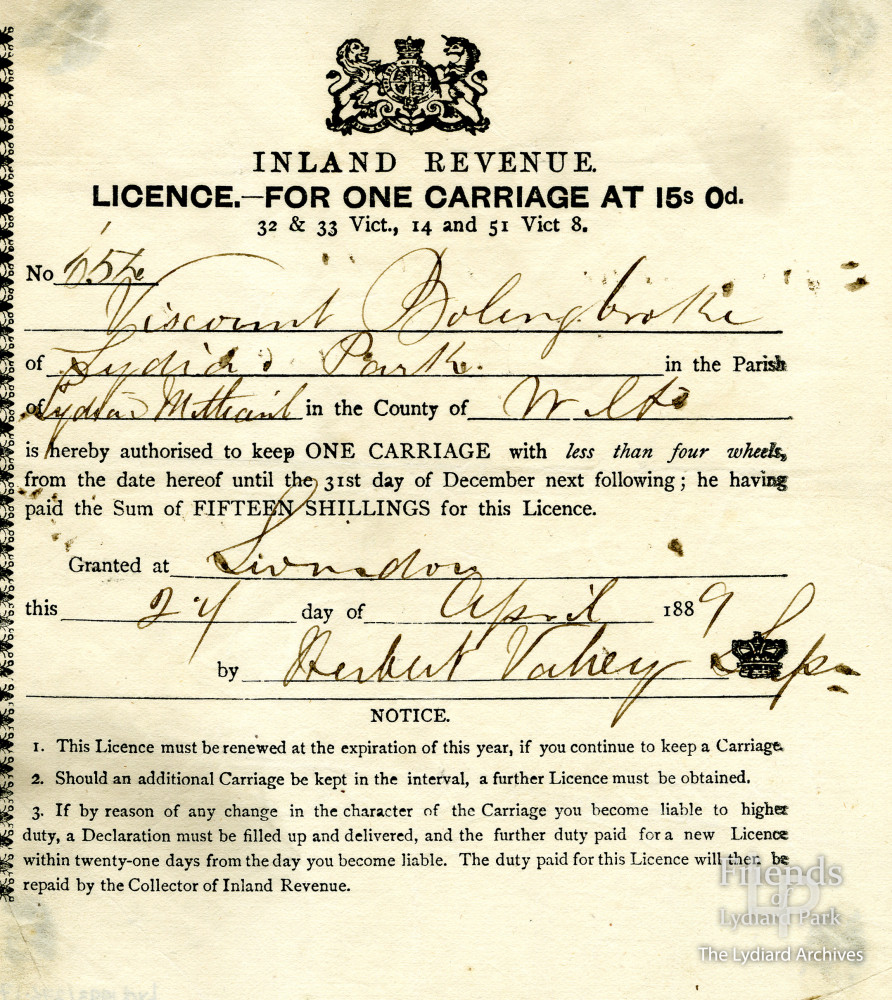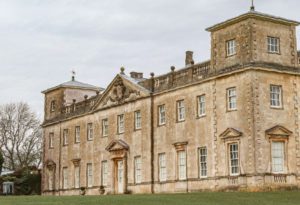Victorian Taxes
On April 24th 1889, Viscount Bolingbroke of Lydiard Park was issued with this licence to keep a carriage. The carriage had to have fewer than 4 wheels and cost 15 shillings from the date of issue until the 31st December of the same year. As the licence explains, if Lord Bolingbroke wished to add another carriage to his collection, he would require an additional licence and if anything about the carriage changed (another wheel added, perhaps) then he had to re-apply.
In the Victorian era a property-owner would often get a composite tax receipt to cover not only carriages, but also male servants, dogs and the right to wear or use armorial bearings such as coats of arms. A Mr John Taylor of Kensington Palace Gardens paid the grand total of 12 pounds, ten shillings and sixpence in 1889 for five male servants, four carriages and one dog!
History is full of quirky taxes that our ancestors paid, including a tax on how many hearths you had in your house and the window tax which led people to block up the windows in rooms that they did not use. You can still see plenty of evidence of this today in old houses where a window space has sometimes been bricked up. In 1712, wallpaper was taxed and later that century a short-lived clock tax of 5 shillings per clock was introduced but this led to such a decline in the clock-making industry that it was repealed after only 9 months. Between 1784 and 1811, men’s hats were subject to a tax and milliners required a licence and had to stamp each hat to prove it had been legally made.
The tax on male servants was finally repealed in 1889 and the tax on dogs in 1988. The tax on carriages developed into motor vehicle licensing and is with us still!

